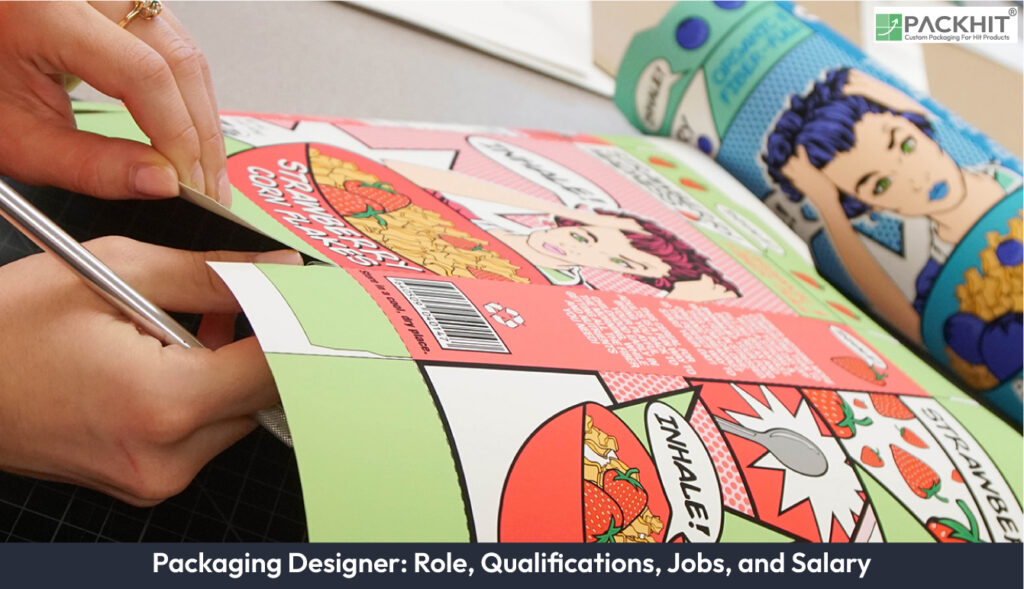A packaging designer is a professional responsible for creating functional and visually compelling product packaging that aligns with brand identity, enhances consumer appeal, and ensures product protection. This role requires a combination of creative design skills, technical proficiency, and material knowledge to meet the diverse needs of industries such as food, cosmetics, and electronics. With an average annual salary of $91,520 in the United States, packaging designers often hold a bachelor’s degree, with 75% of job postings requiring this qualification. Their career paths range from junior roles to senior positions like art directors or independent design consultants, reflecting the profession’s growth potential. Emerging trends in packaging, including sustainable materials and reusable packaging, are reshaping the packaging design field, making it a critical component of modern product development and marketing strategies.
What is the Role of a Packaging Designer?
Packaging designers are tasked with conceptualizing and executing designs that balance functionality, aesthetics, and brand alignment. Their responsibilities include determining the shape, size, and material of packaging, as well as incorporating graphics, typography, and finishes to create a cohesive design. Packaging designers collaborate with clients to understand business objectives, ensuring the final product meets both practical and marketing requirements. These designers also oversee the production process, approving print proofs to maintain color accuracy and consistency.
Specific tasks of packaging designers may involve applying finishes such as gloss or metallic foils to enhance visual appeal, embossing or debossing to add tactile sophistication, and integrating clear windows for product visibility. Designers also consider cost efficiency and sustainability, selecting materials that minimize environmental impact while maintaining durability and functionality.
What Tools Do Packaging Designers Use?
Packaging designers rely on a range of tools to execute their work effectively. Design software, such as Adobe Illustrator and Photoshop, is essential for creating digital mockups and refining visual elements. Prototyping tools enable designers to test and iterate on their concepts, ensuring functionality and feasibility before production.
Material knowledge is another critical component, requiring familiarity with various substrates, coatings, and finishes. Designers often collaborate with manufacturers to select materials that balance cost, durability, and sustainability. Measuring tools, such as rulers and calipers, are used to ensure accuracy in dimensions and alignment during the design process.
What Skills are Required for Packaging Designers?
Packaging designers must possess a blend of creative and technical skills. Creativity is essential for developing innovative designs that capture consumer attention, while technical proficiency ensures the feasibility of these designs during production. Proficiency in design software, particularly Adobe Creative Suite, is a fundamental requirement. Additionally, knowledge of packaging materials, including their properties and applications, is critical for creating functional and sustainable designs.
An understanding of branding principles is equally important, as packaging often serves as the first point of contact between a product and its audience. Designers must align their work with brand aesthetics to reinforce identity and consumer trust. Other key skills include attention to detail, problem-solving, and the ability to manage multiple projects simultaneously.
Educational Requirements
A bachelor’s degree is the standard educational qualification for packaging designers, with 75% of job postings specifying this requirement. Common fields of study include graphic design, industrial design, and packaging engineering. Advanced degrees, such as a master’s, are less common but may provide an edge for senior roles or specialized positions. Coursework typically covers design principles, material science, and software proficiency, equipping students with the skills needed for the profession.
Experience and Portfolio
Experience in packaging design or related fields, such as graphic design, is highly valued. A strong portfolio showcasing past projects is often a prerequisite for employment. Portfolios should highlight a range of skills, including creativity, technical execution, and the ability to meet client objectives. Employers also look for evidence of problem-solving and innovation, particularly in projects that address unique challenges or incorporate sustainable practices.
What are the Career Paths for Packaging Designers?
Packaging designers typically begin their packaging careers in junior roles, where they gain experience and develop their skills under the guidance of senior designers. With time and expertise, they may advance to positions such as senior designer, art director, or creative director. Some professionals choose to establish independent design firms, offering specialized services to a diverse client base.
The profession also offers opportunities for specialization, such as sustainable packaging design or luxury packaging. These niches often require additional expertise in material science or high-end branding, respectively. Career progression is largely influenced by the quality of a designer’s portfolio, their ability to adapt to industry trends, and their proficiency in emerging technologies.
What is the Average Salary for Packaging Designers?
The average annual salary for packaging designers in the United States is $91,520, with variations based on location, experience, and industry. California, for example, offers some of the highest salaries in the field, reflecting the state’s demand for skilled professionals in industries like technology and consumer goods. Entry-level positions typically offer lower salaries, while senior roles and specialized positions command higher compensation.
Freelance packaging designers may experience greater variability in income, depending on the scope and frequency of their projects. However, they also have the potential to earn more by taking on high-profile clients or specializing in lucrative niches.
How are Emerging Trends Shaping the Role of Packaging Designers?
Sustainability is a significant trend influencing the packaging design industry. Designers are increasingly tasked with creating eco-friendly solutions, such as using biodegradable materials or designing reusable packaging. These practices not only reduce environmental impact but also align with consumer preferences for sustainable products.
Technological advancements are another driving force, enabling designers to create more intricate and customizable designs. Tools like 3D modeling and prototyping software allow for greater precision and efficiency, while innovations in printing technology expand the possibilities for finishes and textures.
The rise of e-commerce has also impacted packaging design, emphasizing the need for durable and visually appealing packaging that enhances the unboxing experience. Designers must consider factors such as shipping constraints and brand storytelling to create packaging that resonates with online consumers.

